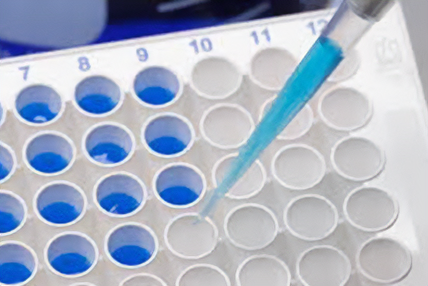LA VERSIONE ELETTRONICA DELLE INFORMAZIONI E DEI DOCUMENTI CONTENUTI IN QUESTA SEZIONE DEL SITO É RESA DISPONIBILE DA ULISSE BIOMED S.P.A. IN BUONA FEDE ED ESCLUSIVAMENTE A FINI INFORMATIVI. QUESTI DOCUMENTI NON SONO RIVOLTI A E NE È PRECLUSO L'ACCESSO DA PARTE DI PERSONE RESIDENTI O FISICAMENTE PRESENTI NEGLI STATI UNITI D'AMERICA, AUSTRALIA, CANADA, GIAPPONE, SUDAFRICA O IN OGNI ALTRA GIURISDIZIONE OVE CIÒ NON SIA CONSENTITO.
Prima di accedere alle informazioni e ai documenti contenuti in questa sezione del sito internet, si prega di leggere l'informativa legale qui sotto riportata. Tale informativa legale potrebbe essere modificata o aggiornata.
In presenza di un qualsiasi dubbio riguardo al contenuto della presente informativa legale, o riguardo alle azioni da intraprendere con riferimento ad essa, vi preghiamo di non accedere alla presente sezione e di consultare un legale.
Disclaimer
L'accesso alle informazioni e ai documenti contenuti in questa sezione del sito internet potrebbe essere illegale in alcune giurisdizioni, e solo determinate categorie di soggetti potrebbero essere autorizzate ad avere accesso a tali informazioni e documenti.
In particolare, salvo quanto diversamente determinato da Ulisse Biomed S.p.A. e consentito dalle leggi applicabili, nessuna offerta di azioni da parte di Ulisse Biomed S.p.A. verrà effettuata, direttamente o indirettamente, negli Stati Uniti d'America in Australia, Canada, Giappone o in Sudafrica o in ogni altra giurisdizione ove ciò non sia consentito.
In particolare, le azioni di Ulisse Biomed S.p.A. non saranno oggetto di registrazione ai sensi dello U.S. Securities Act del 1933. Inoltre, le azioni non saranno registrate né offerte ai sensi delle disposizioni applicabili di nessuno stato, provincia, territorio, contea o giurisdizione degli Stati Uniti d'America. Pertanto, salvo che siano esenti dagli obblighi di registrazione ai sensi della normativa applicabile, le azioni non potranno essere offerte, vendute o distribuite, direttamente o indirettamente, negli Stati Uniti d'America o in qualsiasi altra giurisdizione, laddove tale offerta, vendita o distribuzione costituisca una violazione della normativa applicabile o richieda una registrazione delle azioni in tali giurisdizioni. Non verrà effettuata alcuna offerta delle azioni negli Stati Uniti d'America.
Se non si è autorizzati ad accedere alle informazioni ed ai documenti contenuti nel presente sito internet, o se si ha qualsiasi dubbio riguardo a tale autorizzazione, si prega di non accedere.
Requisiti
Ciascun soggetto che accede alle informazioni e ai documenti contenuti nella presente sezione dichiara e garantisce a Ulisse Biomed S.p.A. di accedere esclusivamente per fini informativi. Questo sito internet e le informazioni in esso contenute non costituiscono un'offerta a vendere o la sollecitazione di un'offerta ad acquistare o vendere, alcuna azione, diritto o altro strumento finanziario relativo a Ulisse Biomed S.p.A.. Inoltre, le informazioni e i documenti qui contenuti non possono essere considerati né interpretati come finalizzati a dare consigli e/o pareri, né possono essere ritenute delle raccomandazioni di Ulisse Biomed S.p.A. o di altre parti da porre a fondamento della vendita o dell'acquisto di azioni di Ulisse Biomed S.p.A..
Salvo quanto previsto da Ulisse Biomed S.p.A. e consentito dalle leggi e regolamentazioni applicabili, le copie del contenuto delle seguenti pagine (inclusi documenti su di esse caricati) non possono essere in alcun modo trasmesse, rese disponibili o distribuite negli Stati Uniti d'America e i soggetti che entreranno in possesso di tali documenti (inclusi custodi, rappresentanti o fiduciari) non potranno distribuire o trasmettere tali documenti negli Stati Uniti d'America.
Accettazione
Le versioni elettroniche delle informazioni e dei documenti contenuti nel presente sito internet non sono dirette e non sono accessibili a soggetti che sono residenti o comunque che si trovano attualmente:
- negli Stati Uniti d'America;
- in Australia, Canada, Giappone o Sudafrica; o
- in qualsiasi altra giurisdizione, laddove tale accesso o diffusione costituisca una violazione della normativa applicabile.
Premendo "accetto", dichiaro sotto la mia piena responsabilità di:
- non essere residente e di non trovarmi fisicamente negli Stati Uniti d'America, in Australia, Canada, Giappone o Sudafrica e mi impegno a non trasmettere in alcun modo tali informazioni e documenti contenuti nel presente sito internet a persone negli Stati Uniti d'America, in Australia, Canada, Giappone o Sudafrica;
- non essere residente e di non trovarmi fisicamente in qualsiasi altra giurisdizione, laddove tale accesso o diffusione costituisca una violazione della normativa applicabile.
Ho letto e compreso l'informativa legale. Comprendo che la suddetta informativa legale possa limitare i miei diritti. Mi impegno a rispettare tutte le limitazioni sopra riportate.
Premendo il tasto "accetto" (i) dichiaro di essere autorizzato ad avere accesso alle informazioni e ai documenti contenuti nel presente sito internet, e (ii) prendo atto e accetto che le informazioni e le dichiarazioni contenute nel documento al quale sta accedendo sul presente sito internet si riferiscono esclusivamente alla loro data di riferimento (o qualsiasi altra data ivi specificata), e che tali informazioni e dichiarazioni potrebbero divenire imprecise, superate o obsolete.
SE LEI NON È IN GRADO DI CERTIFICARE QUANTO SOPRA, DEVE PREMERE IL TASTO EVIDENZIATO COME "NON ACCETTO" O IN ALTERNATIVA ABBANDONARE IL PRESENTE SITO INTERNET.













